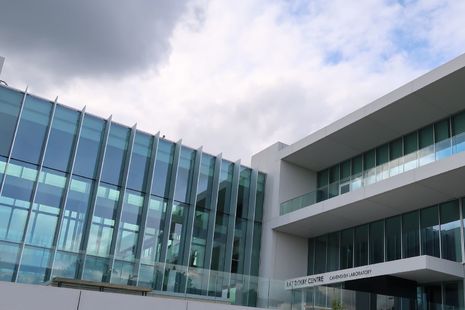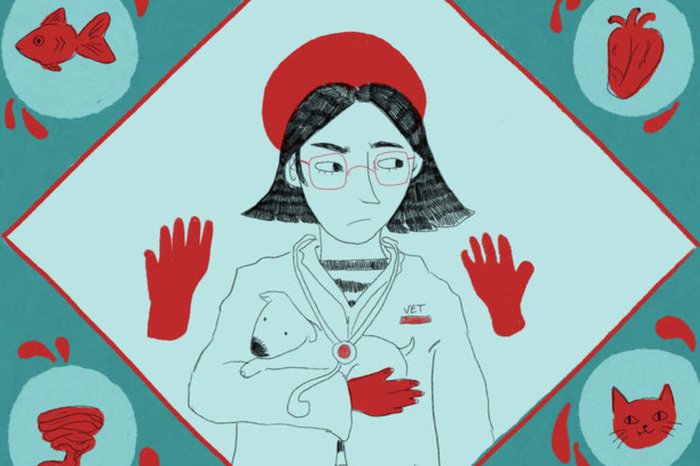Heading west: Cambridge’s changing centre of gravity
Nick James asks whether the new Silicon Valley is leaving the humanities behind

If you were a tourist alighting from the new electric U bus onto JJ Thomson Avenue, you wouldn’t know you were in Cambridge. There would be no historical buildings, students draped in gowns, or punters along the Cam. Instead, you’d be faced with sleek, modern buildings; neatly landscaped gardens; and recently paved roads and cycle paths.
JJ Thomson Avenue is one of the main roads for the new West Cambridge Site: a STEM-focused, second campus for the University. The campus is undergoing a radical, expensive transformation including the recently completed West Hub, as well as soon-to-open laboratories and buildings. With the new developments will come plenty of opportunities, innovation, and investment, but it also shifts the University’s centre of gravity away from the cobbled streets towards the futuristic west. What will this mean for the University’s future?
It’s no secret that Cambridge is vying to become the science capital of the UK, if not of all of Europe. Mike Derbyshire, partner at the property consultancy firm Bidwell’s, told me he has seen a recent “seismic change” in levels of international investment directed towards Cambridge STEM industries. Derbyshire cited the existing innovation and collaboration hotspots in the city, as well as previous home-grown STEM successes like Arm, as major pull factors for investing in Cambridge.
“Cambridge is vying to become the UK’s science capital”
With all this appetite and ambition from external investors, it’s not surprising the University’s second campus is so STEM-oriented. This investment “builds up that core base of scientists and researchers, and the bigger the ecosystem […] the better it is in terms of innovation and attracting the best staff,” Derbyshire explained.
Part of that investment has gone towards constructing the Ray Dolby Centre, due to finish this year. It’s a colossal, pearly-white physics centre (with a square footage similar to Edinburgh Castle) that will rehouse the entire department. The building will be filled with state-of-the-art facilities, including purpose-built labs for world-leading research programmes and a 450-seat lecture theatre.
Unsurprisingly, physics students are eager to move in. Shams Ullah, co-chair of the University Physics Society, told me: “I am really looking forward to being able to use this new space! Alongside new lecture theatres and study spaces, I am excited to use the upgraded and recalibrated equipment to improve my own lab work. We can also expect to see more social spaces for physicists of all years, including a new cafeteria, so the Ray Dolby Centre is definitely set to take the Cavendish to new heights!”
STEM innovation and development in West Cambridge doesn’t stop there. Across the road, construction has begun on the new Whittle Lab, which will be a leading centre for researching zero-carbon aviation technology. Last year, King Charles visited the site to break ground on the construction of a very futuristic design which will house new labs, a manufacturing centre, and the UK National Centre for Propulsion Power. The lab has also partnered with some of the largest engineering firms in the world, including Rolls-Royce and Mitsubishi. Professor Robert Miller, director of the new lab, said: “The new Whittle Lab has been designed as a disruptive innovation laboratory targeting the critical early stages in the lifecycles of technologies, where there are windows of opportunity to translate scientific strengths into global technological and industrial leadership.”
“This second campus won’t just offer new academic opportunities, but also a new way of living and working”
These new buildings and facilities will open up exciting opportunities for Cambridge, ensuring it stays at the forefront of global research. However, it won’t be cheap: the Ray Dolby Centre is expected to cost more than the Gherkin at £300 million (adjusted for inflation), and the new Whittle Lab over £50 million. The site marks the University’s largest expansion in decades, firmly shifting the centre of gravity westwards and towards future STEM industries.
This second campus won’t just offer new academic opportunities, but also a new way of living and working. Alongside the faculty buildings, the site will include commercial spaces designed to provide ‘side-by-side’ collaborative working. Plazas are also being constructed to encourage more interaction with the wider community. When the site was announced in 2014, it was noted that the campus wasn’t being built around a college. At the time, Varsity reported that Nick Hillman, director of the Higher Education Policy Institute, said: “I do think elements of the ‘Cambridge experience’ will be missing from the site.”
There are nearby colleges like Churchill and Girton, and attempts are being made to make the site as communal as possible, with the introduction of leisure facilities, housing, restaurants, and cafes. But without a college to ground the site, and the campus being so far away from the city centre, certain Cambridge eccentricities and traditions will inevitably be missing.
Another noticeable absence from the site may be arts and humanities students, who will have little reason to visit the second campus. Although dedicated STEM and humanities sites like the New Museum Site and Sidgwick Site are nothing new, the existing sites are considerably smaller than West Cambridge. Their proximity to each other and colleges also fosters interdisciplinary conversations which is one of the hallmarks of the Cambridge experience. The changing centre of gravity may risk isolating the disciplines and diluting the collaborative culture that so defines Cambridge.
“Humanities students have been unimpressed with Sidgwick Site since its inception”
This division may also be heightened by the inevitable comparisons which will be made between the new campus and existing sites. Unlike the current enthusiasm STEM students have for West Cambridge, humanities students have been unimpressed with Sidgwick Site since its inception. When plans were first drawn up for Lady Mitchell Hall in 1960, they received immediate opposition from students and faculty alike. Upon reviewing the plans, one history academic said: “We seem to live under a kind of architects’ despotism […] the outside suggests to me most powerfully in part a wind tunnel, in part a shoal of half a dozen sharks and all around a primitive log stockade.”
Sidgwick site didn’t just face aesthetic problems during its original development: the history faculty’s opening in 1968 was delayed by weeks due to heavy flooding, which the architects blamed on the “unusual, almost revolutionary style of the building.”
Humanities students continue to bemoan the site today. One historian told me the Seeley Library is “Arctic in winter and Saharan in summer,” and that, “I imagined studying at Cambridge would involve curling up in snug corners of old libraries, not searching for a working plug socket in a greenhouse.” A philosopher remarked, “the Raised Faculty Building is about as drab and utilitarian as its name suggests.”
Part of what makes Cambridge such an exceptional university is the continual intermingling of people and ideas across a variety of disciplines, stoking creativity, imagination and collaboration. This mixing is encouraged by faculties being in such close proximity to each other and colleges housing students and fellows from a variety of subjects. The development of West Cambridge is changing the University’s centre of gravity, and risks creating a wider divide between subjects. As the University takes advantage of the amazing opportunities the new campus will offer, it’s important that measures are taken to ensure Cambridge continues to act as one, cohesive University.
 News / Cambridge bus strikes continue into new year16 January 2026
News / Cambridge bus strikes continue into new year16 January 2026 News / Uni members slam ‘totalitarian’ recommendation to stop vet course 15 January 2026
News / Uni members slam ‘totalitarian’ recommendation to stop vet course 15 January 2026 Science / Why smart students keep failing to quit smoking15 January 2026
Science / Why smart students keep failing to quit smoking15 January 2026 Interviews / The Cambridge Cupid: what’s the secret to a great date?14 January 2026
Interviews / The Cambridge Cupid: what’s the secret to a great date?14 January 2026 News / Cambridge local elections to go ahead in May despite local government reorganisation16 January 2026
News / Cambridge local elections to go ahead in May despite local government reorganisation16 January 2026









